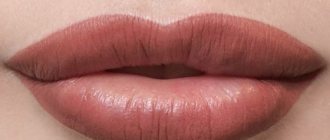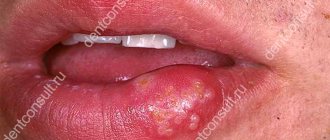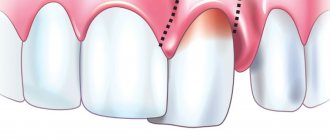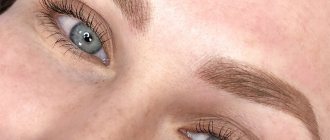A furuncle (known to many as a boil) is a purulent acute inflammation of the hair follicle on the skin, which is provoked by Staphylococcus aureus. The inflammatory process should not be taken lightly, since Staphylococcus aureus is very dangerous for humans. Many people make the mistake of trying to get rid of a boil that appears on their own, which in the future can provoke a number of undesirable consequences.
Using ichthyol ointment
A boil can be treated well if it is detected at an early stage , then there is no need for surgical intervention. The opened boil must be treated with hydrogen peroxide to ensure disinfection.
For three days, ointment compresses are applied so that the wound heals and there are no relapses. Minor traces remain at the site of formation, but not always.
Ichthyol ointment promotes wound healing well, despite the fact that it has an unpleasant odor. After the formation has broken through, a compress is made:
- Ichthyol ointment is applied to bandages.
- The compress is applied to the affected area.
- When the compress is removed, the affected area is treated with hydrogen peroxide.
- A repeated compress is applied.
The product not only promotes rapid wound healing, but also prevents relapse of the disease. The person does not feel pain, his general condition does not worsen.
READ ALSO: What causes recurrence of herpes on the lips: causes and treatment
When using the ointment, tissues are actively regenerated , the blood becomes more fluid, and the blood supply improves. You should not use the product excessively; apply only to the affected areas. Ichthyol ointment cannot be used with other medications.
The product penetrates deep into the skin, healing the deepest wounds. It has a multidirectional effect, not only the symptoms of the disease are eliminated, pathogens are neutralized, and swelling is eliminated.
Contraindications
If ichthyol ointment is used, you should not use preparations that contain iodine and heavy metal salts. This forms new compounds leading to unpredictable consequences. During the treatment period, no face masks are made and lotions are not used. The drug is contraindicated for children under 12 years of age.
What to do
It happens that the boil breaks through, but the rod does not come out any further. If the next day after opening the tumor the swelling in the problem area increases, you should consult a surgeon.
If the boil opens spontaneously, but the release of the purulent core is delayed, a consultation with a surgeon is necessary.
When self-cleaning the boil cavity, it is necessary to carry out antiseptic treatment with hydrogen peroxide, followed by the use of local antibiotic-containing ointments.
If the process spreads, consultation with a surgeon is required.
Failure to comply with this requirement is dangerous due to the spread of pus throughout the body and the development of sepsis. And after opening the neoplasm, it should be treated with Chymotrypsin.
Which doctor should I contact with a boil?
Boil is a purulent inflammatory formation that affects hair follicles.
Otherwise, it is recommended to treat the open cavity with a solution of hydrogen peroxide by applying the liquid to a cotton pad. The product disinfects wounds, preventing secondary infections.
It is important to be careful when processing. If particles of a cotton swab or tissue get into the wound, suppuration of the tissue will occur.
After treatment, the wound should be covered with a sterile bandage with Vishnevsky ointment or other drugs that:
- suppress the activity of bacterial microflora;
- stimulate the regeneration of damaged tissues.
If there is a possibility of infection spreading to nearby parts of the body, it is recommended to use ointments that contain antibiotics.
The duration of treatment in this situation is determined by the doctor. Exceeding the permissible dosage of the drug provokes a weakening of local immunity and, as a result, increases the likelihood of re-formation of boils.
Opening a boil in case of immunodeficiency is dangerous due to the generalization of infection, the development of abscesses, phlegmon of the subcutaneous tissue, and lymphadenitis.
If the abscess is located near a joint, arthritis may develop. Therefore, treatment should be prescribed and carried out under the supervision of a surgeon.
Cosmetologist, dermatovenerologist, laser therapist
Nachoeva Irina Nasredinovna
7 years experience
If the tumor breaks out on the street, you should remove the liquid from the boil using wet wipes and close the wound. In addition, the problem area should not be allowed to overcool, otherwise a relapse will occur.
How to treat a boil
A dermatologist treats boils.
To avoid the recurrence of boils, the following are prescribed:
- physiotherapeutic procedures such as UHF or ultraviolet radiation;
- autohemotherapy.
In case of a burst boil, it is prohibited:
- comb and rub the problem area;
- remove hairs in places where boils have formed;
- use creams with a fatty base;
- treat the skin with ointments with a pulling effect if the rod comes out completely;
- wear contact lenses when a boil bursts near the eyes (swelling of the eyelids is possible);
- warm up the problem area.
It is strictly forbidden to squeeze pus out of an open wound. If the fluid does not come out on its own or under the influence of ointments, you need to seek help from a surgeon. This is especially true when boils affect the front part of the head.
The appearance of blood clots coming out of the wound along with pus indicates damage to the deep layers of the skin and rupture of capillaries or arteries.
This situation is considered dangerous, as there is a possibility of developing sepsis or blood clots.
If bleeding occurs, it is recommended:
- treat the open cavity with an antiseptic using cotton wool wrapped in gauze;
- apply a pressure bandage ;
- seek help from a doctor .
Sometimes, when bleeding occurs, the patient is admitted to the hospital for 2-3 days, where antibiotic therapy is carried out.
Effective means
Depending on the nature of the lesion, to eliminate the consequences, the following are used:
- Alcohol solutions of aniline dyes.
- Pastes that disinfect wounds.
- Ointments with anti-inflammatory effect.
- Antibacterial ointments.
If there is a suspicion that the boil has caused complications, antibiotic tablets, immunomodulators and vitamin complexes are prescribed.
Application of Vishnevsky ointment
After the formation has opened spontaneously, proceed as follows:
- the wound is treated with hydrogen peroxide;
- ointment is applied to the affected area;
- treatment continues for 3-4 days until all the pus comes out;
- Compresses are made (the ointment is applied to gauze and applied to the affected area, the compress remains for 12 hours).
Using the product promotes blood flow to the affected area, metabolism becomes faster, and the affected tissues are quickly restored.
How else can you treat an opened boil?
If the formation is on the face, nose or ear, then antibiotic ointments are used. Recommended for people with weakened immune systems and for recurrent furunculosis. Application:
- the purulent surface is treated with an antiseptic solution;
- antibiotic ointment is applied.
READ ALSO: Acyclovir ointment 5%, 10g Ointment for external use Aluminum tube - cardboard pack OZONE LLC, buy at VITA pharmacy
There is a wide choice, the most commonly used are:
- Levomekol.
- Oflocaine.
Levomekol destroys germs and cleanses pus. Has anti-inflammatory, healing and antibacterial effects. Tissues are restored quickly. A sterile gauze bandage is soaked in ointment and applied to the affected area. A new dressing is done every day.
Oflokain destroys germs, resists pain and swelling. Contains lidocaine, which prevents bacteria from multiplying and relieves pain.
Dangerous situation
If the pus is not completely released from the cavity, the fluid penetrates the circulatory system, through which it reaches the brain.
Causes of boils on the body
The appearance of a boil on the body is a sign of activation of staphylococci and streptococci.
Depending on which part of the organ is affected, the following develops:
- Meningitis is an acute inflammatory disease that occurs in the tissues of the brain. Meningitis causes severe complications. Some patients die without medical help.
- Encephalitis . It is also characterized by the course of the inflammatory process in brain tissue.
The penetration of pus into the circulatory system causes the development of thrombophlebitis, due to which the patient experiences intense pain and elevated body temperature.
In extreme cases, this pathology is complicated by multiple abscesses of internal organs, bones, and perinephric tissue.
A boil rupture is not dangerous to humans, provided that the patient promptly treats the open wound with disinfectant compounds. In the absence of treatment, pus penetrates into the circulatory system, causing complications in the form of abscesses of internal organs and inflammation of the brain.
Folk remedies for healing a ruptured abscess
After the boil has burst, folk remedies are used to quickly heal and prevent relapse:
- Warming compress with alcohol : a cotton swab is dipped in preheated alcohol, carefully applied to the sore spot, and fixed with a gauze bandage for 20 minutes. The method helps get rid of inflammation.
- Raw potatoes are grated on a fine grater , laid out on a gauze bandage, and left for an hour and a half. Strengthened with a waterproof bandage, it prevents relapse of the disease.
- Salt solution (take 2 tablespoons with salt, dilute with 200 ml of water). Gauze is soaked in the solution and folded into 2-3 layers. Apply to the affected area for 20-40 minutes.
READ ALSO: Bowenoid papulosis: photos, treatment in men and women
Algorithm for opening a boil
The procedure is carried out under local anesthesia, therefore, without any pain, the formation and the skin around it are treated. A lot of cotton pads and alcohol are prepared in advance - in this case, disinfection plays a big role.
Using a sterile scalpel, an incision is made and all pus is removed. Along with the pus, the rods (the roots of the boil) also come out; it is important to remove all of them. Usually, when the formation is mature, the roots are easily removed with light pressure. The wound is thoroughly cleaned and carried out as thoroughly as possible, and drainage is installed (a special rubber strip). After drainage is installed, the wound is covered with a sterile dressing with hypertonic saline solution or antibacterial ointments.
For recurrent boils:
- a blood test is prescribed to check for diabetes mellitus - purulent inflammation on the skin is often an indicator of this disease;
- drug therapy is being reviewed;
- a special diet is prescribed.
After removing the abscess, complete healing will take from 10 to 30 days, depending on its size. During this period, it is important to follow all the doctor’s recommendations and prescriptions, since if an infection gets into the wound, serious complications can develop.
This kind of removal leaves a small scar, which leads to aesthetic discomfort. It is for this reason that the use of a laser method for removing boils is common. Laser removal can be carried out even when the boil is not yet fully mature. There is no need to use any ointments after the laser procedure and the procedure does not leave scars. The healing process is quick and painless.
Sometimes spontaneous opening of the boil is observed. In this case, you need to thoroughly wash and sanitize your hands; if you have sterile gloves, put them on. Take cotton or gauze sponges and alcohol. Using gentle pressure, clean the wound from pus - it is important to make sure that the rod comes out along with the pus. Afterwards you need to treat the wound and cover it with a sterile bandage. You should definitely contact a surgeon who will sanitize the wound and install drainage. It is important to understand that without proper medical care, the abscess will form again and grow.
How long does it take for a boil to heal after it has opened?
This question cannot be answered unequivocally; many factors are important. The cellular regeneration process plays a big role; it is individual in nature.
If the treatment is carried out correctly, it does not take much time to heal ; after a week, signs of recovery are already visible.
The first symptom of healing is a dry wound; discomfort does not bother you after a week. If the process is prolonged, the wound is wet and hurts for more than a week after opening, you should consult a doctor.
Is it necessary to open a boil?
In the case of an abscess, that is, when there is an accumulation of pus in the inflamed area, the boils are opened. Purulent formation does not respond to any conservative treatment; in this case, only surgical intervention will help.
You need to understand that the surgical procedure for opening the boil itself does not cause any complications, and its duration is minutes. It is extremely important to start treatment as early as possible to avoid causing serious adverse effects.
Abscesses on the face are very dangerous, there is a risk of infection through the anastomoses into the vascular system of the brain, diseases such as sepsis, meningitis, phlegmon, osteomyelitis can develop.
Content:
- Is it necessary to open a boil?
- Algorithm for opening a boil
- Prevention of boils
If the infection is not removed in a timely manner, it can spread throughout the body, capturing more and more areas of healthy skin.
Sometimes the inflammation extends beyond the hair follicle, and phlegmon develops, which, unlike a local lesion, will have to be treated in a hospital setting.
At the initial stage of the development of an abscess, it is possible to do without surgical intervention. After the formation of a purulent abscess, it must be removed in a hospital setting, after which therapy with anti-inflammatory, antibacterial, and antiseptic drugs is mandatory.
Indications for surgery are the presence of high fever; severe pain; pronounced swelling of the tissue around the purulent formation; loss of strength; lethargy and weakness.











